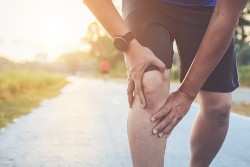After a sports injury, it’s essential to take care of your body. While you might think that you need to be fully inactive to heal and feel better, doing so can only slow the healing process. However, it is important to note that some exercises require the supervision of a trained physiotherapist for a speedy recovery.
Here are some other tips you can follow so you can get back on your feet in no time.
1. Get Personalized Treatment
While different individuals might have experienced the same injury, treatment requirements and the recovery period might not be the same. Some sports-related injuries are common, while some are rare occurrences. So that your doctor can give you the best treatment, it would be helpful if you could communicate well what you are feeling and experiencing. Equip yourself with the correct information. You can find out more about the different types of injuries by reading medical articles or visiting credible online websites.
Most musculoskeletal (MSK) issues can be treated at home. Usually, your doctor will prescribe appropriate activities that you can do independently. Depending on the kind and severity of your case, they may also recommend surgery.
The doctor will first perform a thorough clinical examination and imaging tests to diagnose your problem. This way, they can develop the best treatment plan for your quick recovery while limiting any complications. On the other hand, understanding your injury will help you prepare mentally during treatment and recovery period.
Remember that each individual’s case is unique. It is, therefore, essential to get a personalized treatment plan suitable for each patient.
2. Use Rice Therapy
When treating a severe soft tissue injury, RICE therapy is vital. The primary purpose of this treatment method is to reduce the swelling and pain to heal faster and prevent your condition from developing into a more severe illness. RICE therapy also reduces the occurrence of edema. If edema is not taken care of immediately after an injury, it may lead to further problems during the recovery period.
There are several steps involved in this process.
Step 1: Rest
Upon experiencing a sports injury, stop any strenuous physical activity as soon as possible. Avoid putting pressure on the injured area for 24- 48 hours to prevent further bruising.
Ideally, you should have complete rest for about two days.
Step 2: Ice
In the first few days after experiencing an injury, ensure to apply an ice pack to the injured area for about 15-20 minutes every two to three hours. Consider putting a towel between your skin and the ice to avoid getting your skin from getting too cold.
If you can’t access an ice park, try using frozen vegetables such as corn or peas. While they might not be as effective as an ice pack, they will still help numb the pain and reduce swelling.
Step 3: Compression
Try wrapping the afflicted part with an elastic medical bandage to prevent swelling. Ensure the wrapping isn’t too tight but comfortable enough to allow blood flow.
If the skin below the dressing turns blue, numb, or feels cold, adjust the tightness of the bandage.
Step 4: Elevation
When you’re experiencing pain, elevate the injured part of your body. It should be above the heart level to reduce swelling and throbbing. However, make sure that you feel comfortable with the height and position. You can stack your pillows for elevation.
3. Allow Healing Of The Injured Part
If the pain persists in the area even with small movements, it is an indication that healing is not yet completed. Thus, refrain from using the affected body part temporarily as it may cause further injuries. It may be best to get some more bed rest.
4. Early Range Of Motion Exercise
After the inflammation has settled, it’s advisable to start light exercise to restore a full range of movements.

Since you might not know the proper exercise after an injury, light exercises should be done under the supervision of a trained physiotherapist to ensure that you’re doing them in the correct position and doing the allowed number of sets or repetitions to get the most benefits.
Avoid returning to the sport before the joint motion is fully restored since it can increase the risk of it becoming severe.
5. Eat Healthy Meals That Can Support Faster Healing
Some foods and supplements are better known for their ability to help the body heal faster after an injury. Such foods include:
- Calcium-rich foods and vitamin D: If you have bone injuries such as fractures, consuming foods rich in calcium such as yogurt, milk, cheese, almonds, dark leafy vegetables, and soft-boned fish is recommended. You should also expose yourself to sunlight to get vitamin D to help you absorb calcium.
- Vitamin C: Dark leafy greens and citrus fruits help produce collagen. Collagen has anti-inflammatory properties and helps rebuild tissues.
- Protein-rich foods: Protein-rich foods such as fish and meat aid in muscle-building.
- Omega-3 fats: Omega-3 fatty acids from foods and supplements reduce inflammation. You can get these fats from chia seeds, salmon, soybeans, walnuts, and sardines.
Although these foods are all healthy, bear in mind that they should also be balanced so the rest of your body can still get the proper nutrition it needs to function and support your full recovery.
6. Drink Enough Water
There’s no doubt that water is essential for any recovery. It keeps you hydrated and energetic. Water transports nutrients into the cells and regulates body temperature and pH levels while reducing muscle soreness and tension.
Therefore, make sure to drink at least six glasses of water daily for hydration during your recovery.
Conclusion
Any type of injury can be devastating for a sports enthusiast. Besides causing you pain, it will deter you from continuing the activities you enjoy the most. However, you need to understand that your body needs time to heal.
So that you can get back on track in no time, ensure to seek medical attention immediately after an injury to avoid the damage from developing into a severe issue. Keeping in mind the tips mentioned in this article can also speed up your recovery. Additionally, to prevent future injuries, ensure a warm-up before working out.








